Chase Holleman had been pursuing the man for weeks with phone calls and texts.
“We’re just here to talk and help however we can,” he said.
“Dave” (a pseudonym) needed help. Just a few weeks earlier, in the spring of 2018, he had overdosed on opioids. Paramedics had saved Dave’s life with an emergency injection of the drug naloxone and referred him to Holleman, a case manager for GCSTOP – the Guilford County Solution To The Opioid Problem.
Holleman finally convinced Dave to meet, so he could give him naloxone. Some people who use opioids are destined to overdose multiple times; having naloxone at hand could save Dave’s or someone else’s life.
“He got into the passenger seat of my truck and couldn’t talk – was just covered with shame,” Holleman says. “He looked on the verge of tears and panic the whole time.”
It was a first step, at least. But Holleman hoped his intervention might eventually provide more benefit than naloxone.
FIRST, REDUCE HARM
Arming people who use opioids with the overdose-reversal drug naloxone, which they can use to help others or have a companion use on them, is part of a nontraditional approach to treating drug misuse called harm reduction.
Rather than requesting someone immediately abstain from all drug use, as many treatment programs do, the idea is to chip away at dangers that go along with illegal drug use: deaths from overdoses, infections from dirty needles, risky sex, and more.
Though still outside the mainstream in the United States, harm reduction meets people who use drugs where they are. It helps them take positive steps, even if they’re small steps and even if they don’t immediately stop using or enter treatment.
“You’re trying to get them to make a positive change, any positive change,” says Melissa Floyd-Pickard, chair of UNC Greensboro’s Department of Social Work. She and Professor Jay Poole oversee the University’s work on GCSTOP.
Some people, Dr. Floyd-Pickard notes, won’t change. But some will, and sometimes even a small positive change, such as taking clean syringes, can lead to further changes and even entering treatment.
The approach is rooted in a core principle of social work – meeting people where they are.
“Meeting a person where they are involves understanding their situation and respecting their perspective on their situation,” says Guillermo Tremols, GCSTOP’s Syringe Exchange Program coordinator. “It involves active listening and authentic engagement. It is not about trying to execute changes that we think they need. It’s about finding out what changes they want to make, and assisting them in achieving those goals.”
In this “judgment-free” zone, GCSTOP supplies people who use drugs with naloxone, clean needles, and safe injection supplies and educates them about handling opioids more safely. GCSTOP recognizes that some aren’t ready to enter treatment. But putting brakes on fatal opioid overdoses, which have skyrocketed in recent years, is a first step.
Why opioids kill. People rarely know exactly how potent street drugs are or what’s in them. Someone who thinks they’re taking heroin but are actually taking fentanyl, for example, can accidentally overdose.
Tolerance to opioids builds up with use, but can be lost when a person spends time away from drugs, say in jail or a treatment center. Going back to using the same amounts they did previously can leave someone more vulnerable to overdose.

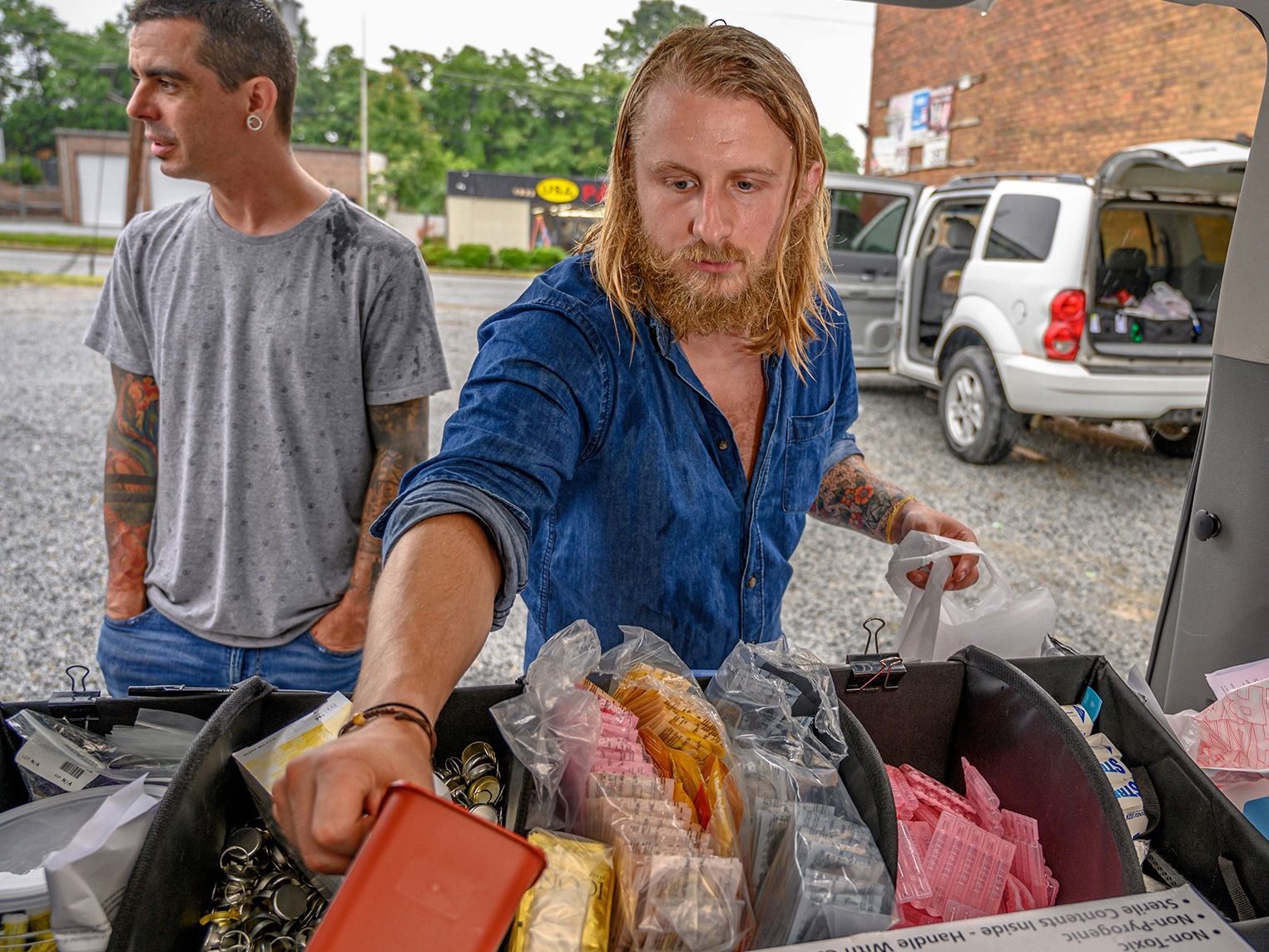
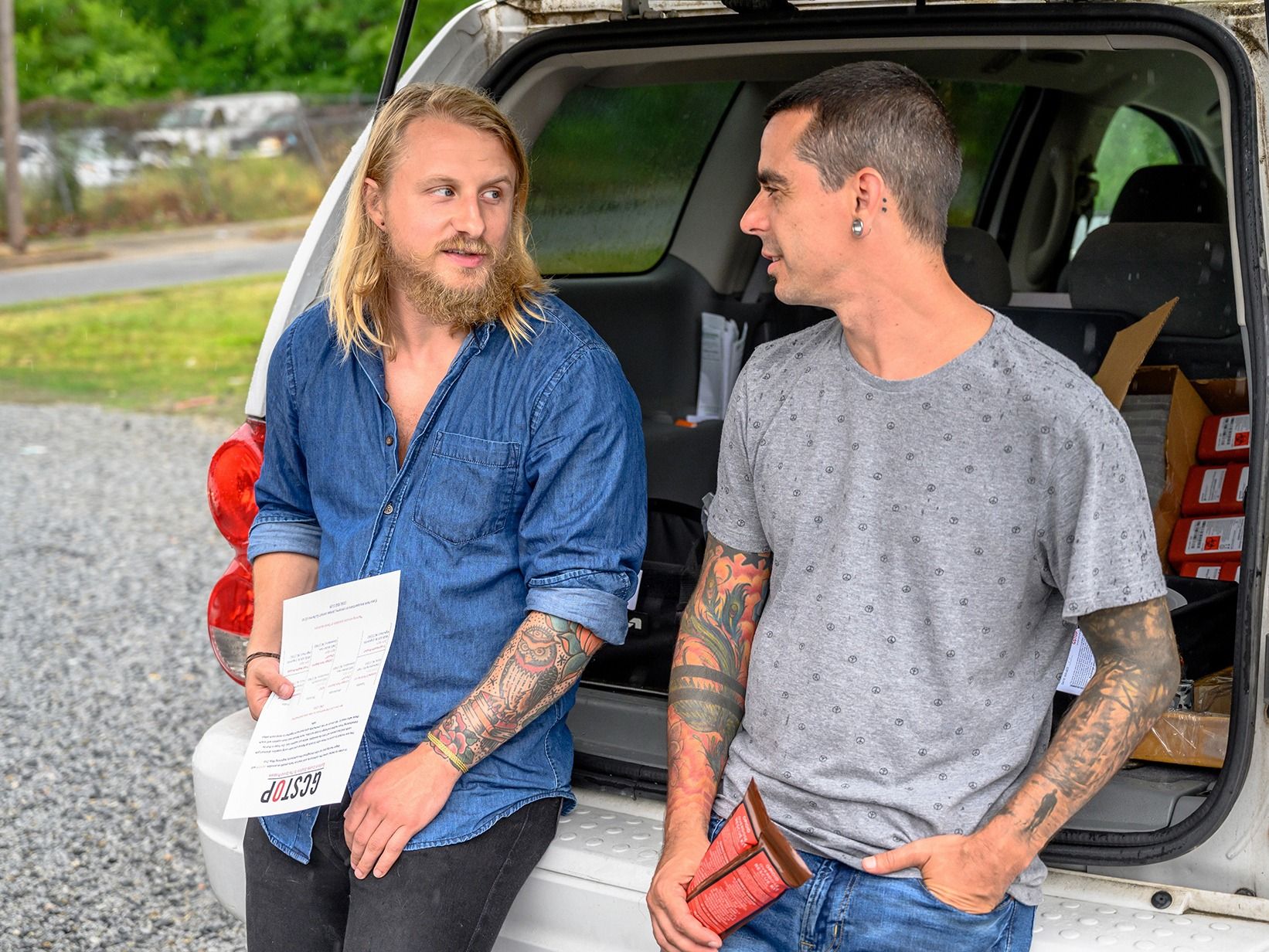
“Safe and nurturing relationships are what make change possible,” says Tremols, who started with GCSTOP as a social work graduate student intern (pictured left, with Holleman center, in the field). “To connect, we employ a concept called unconditional positive regard. Regardless of a person’s life circumstances, regardless of decisions they have made or behaviors they are engaging in, they are worthy of compassion and respect.” See more photos on UNCG Research Flickr.
A DEADLY WEEKEND
Jim Albright, director of Guilford County Emergency Services, remembers when it hit him that something different and alarming was going on with opioids: the last weekend of April 2014.
“One of my supervisors called and said, ‘We need access to the warehouse because we’re running low on naloxone,’” Albright recalls. “I was like, ‘Did they not get enough out in the weekly shipment? What is going on?’”
It wasn’t a logistical error. “We had 24 overdoses, of which five were deaths, in a 24-hour period,” Albright says. Paramedics were using up their naloxone supplies because of the number of patients needing it.
Misuse has been rising since the late 1990s, when doctors began prescribing powerful opioid-based painkillers more often. Many people start opioids for legitimate reasons, such as treating pain from an injury or surgery.
But some people are more vulnerable to the addictive quality of opioids, with a subset becoming dependent after just a few days. After their prescriptions run out, some turn to heroin.
In the last six or seven years, synthetic opioids, including the powerful prescription drug fentanyl and dozens of chemical variants, have hit the streets. Opioid overdoses are now the leading cause of accidental death in the U.S.
In 2017, according to state statistics, an average of five people died from opioid overdoses every day in North Carolina.
STATE RESPONSE
A little over two years ago, Albright got a call from then-state Senator Trudy Wade. The General Assembly was preparing to allocate funds to communities to battle the opioid crisis, and Wade wanted to know if Guilford County had a need for such funding, and if so, how it would be used.
She needed an answer in 10 minutes.
Albright had been learning about harm reduction for a while, and he had a pretty good idea of how he might use state funds: Provide overdose survivors with harm reduction services and – if they are ready – connect them to addiction treatment and other services.
He could have used the state funding to launch a county program, but he had a bigger idea.
UNCG Chancellor Franklin D. Gilliam, Jr. had given a speech about how important it was for the University to engage with the community. Plus, Guilford County and UNCG were seeking partner projects as new members of MetroLab, a network of 37 university and city or county partnerships working to bring data, analytics, and innovation to local government.
“This to me seemed like the absolutely perfect fit,” Albright says. “There is capability within the university community that we felt like we could leverage.”
Albright had been going to meetings of CURE Triad, a county group that was taking on drug misuse by bringing together law enforcement, health care providers, emergency services, addiction treatment providers, and others.
UNCG’s Dr. Stephen Sills, director of the University’s Center for Housing and Community Studies, had been attending those meetings, too, and had experience conducting data analysis projects focused on substance use.
With Sills’ center as a home for the program, Albright launched GCSTOP. Chase Holleman – a social worker and co-founder of CURE Triad – joined as GCSTOP’s Rapid Response Team coordinator.
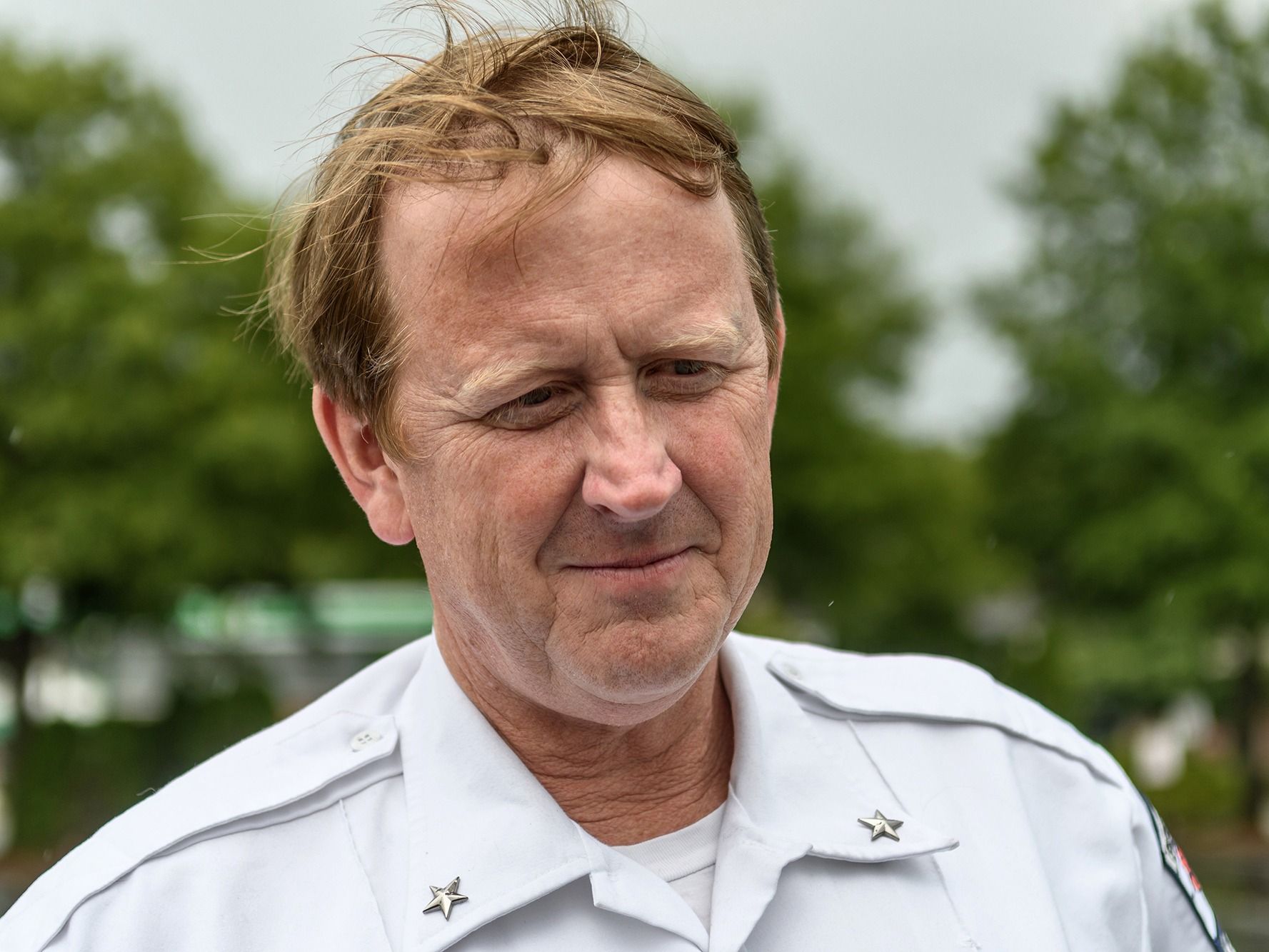
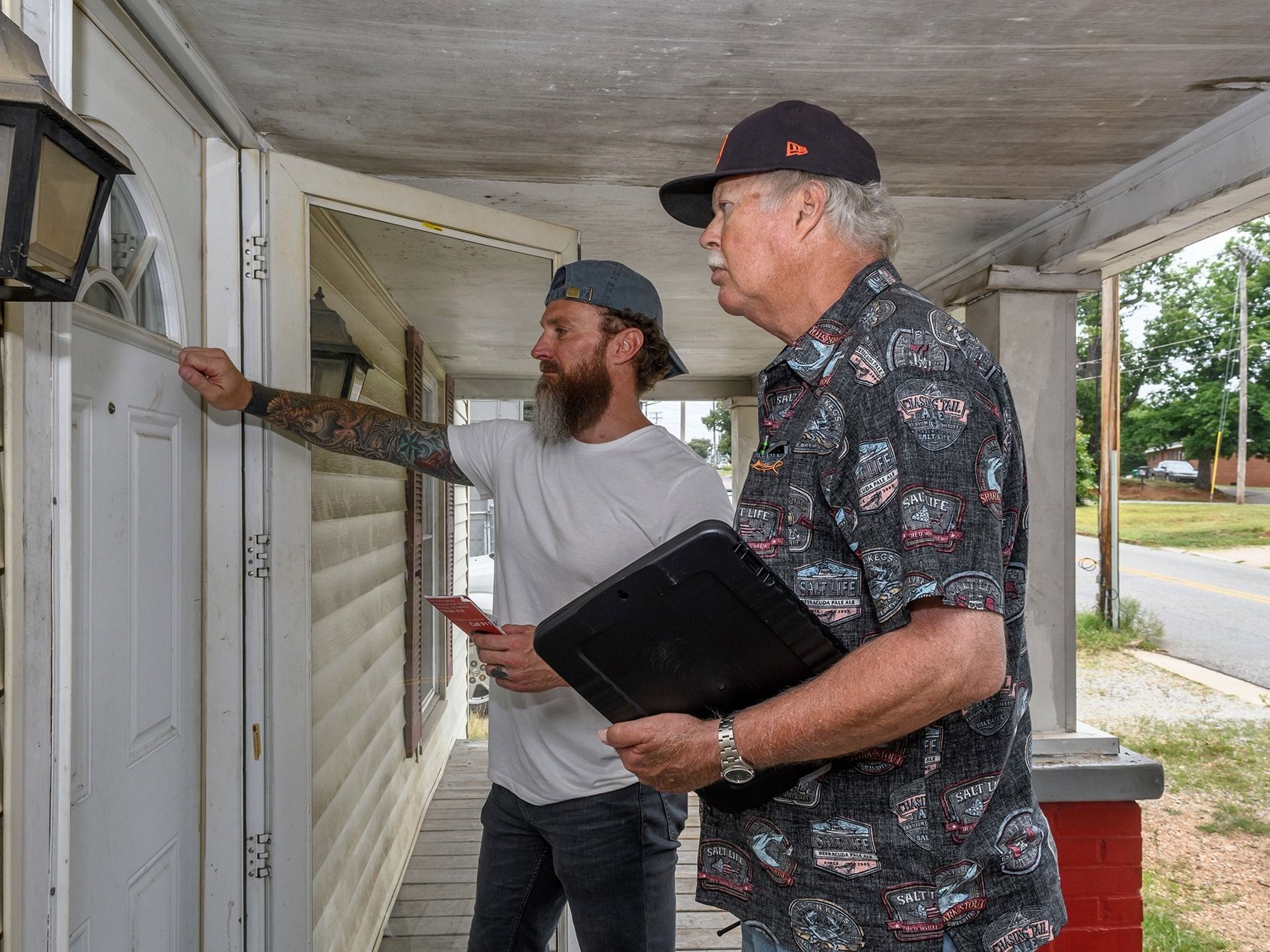
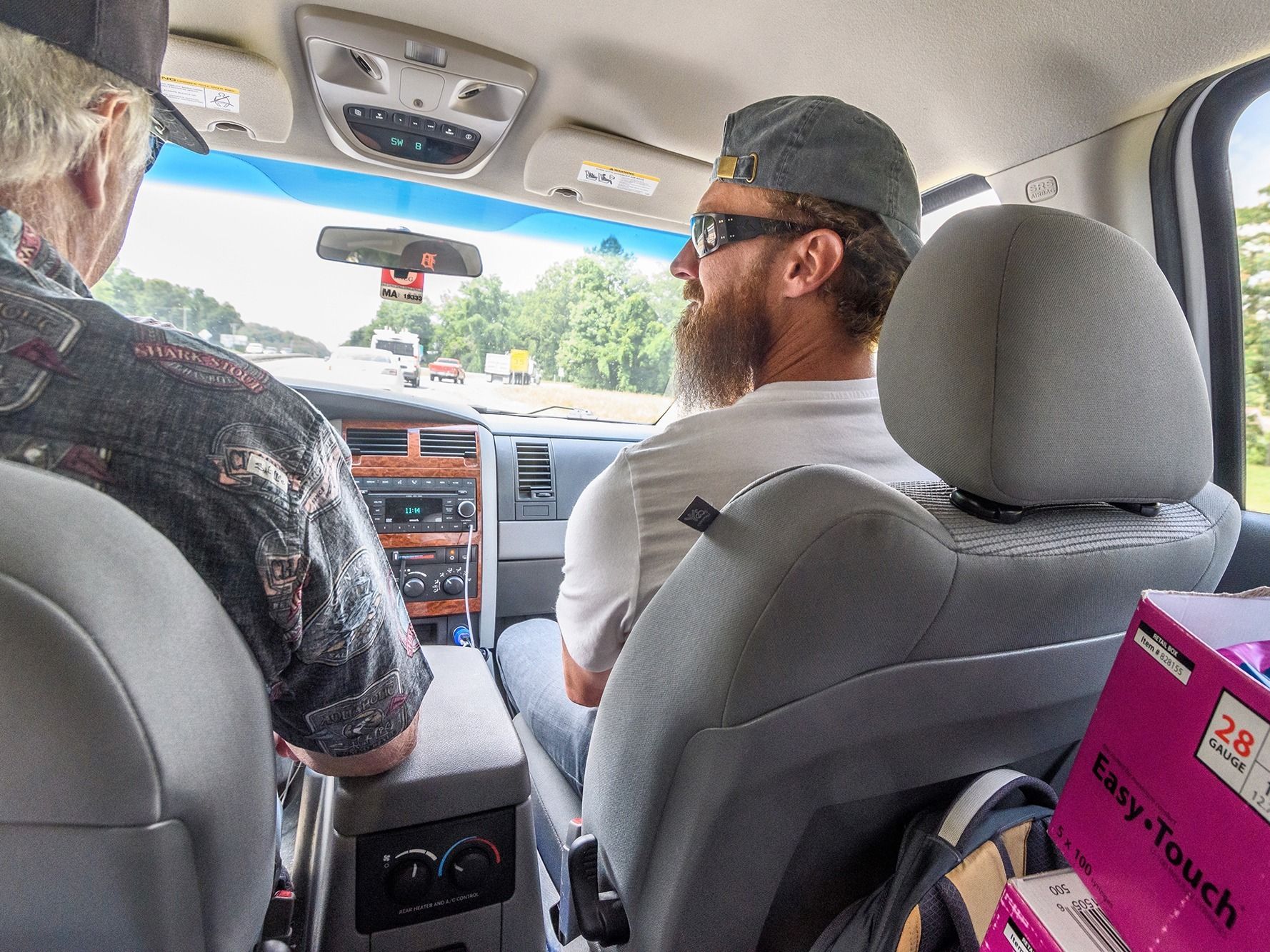
UNCG’s Center for Housing and Community Studies offered Albright (left) the technical know-how to create a system that takes relevant patient data from Guilford County Emergency Services and makes it securely available to GCSTOP social workers. They handle outreach – by phone, by text, or in person – to people who’ve been treated for overdoses.
Center photo and right: social work graduate student Bryan Kendrick (center photo, left) conducts GCSTOP follow-up visits with Guilford County Sheriff’s deputy Harold Farlow. See more photos on UNCG Research Flickr.
EXPANDING IMPACT
As GCSTOP grew, it moved from the Center for Housing and Community Studies to the UNCG Department of Social Work, where it could expand its reach by tapping into the department’s expertise and plugging student interns into the program.
“It just became more and more apparent that social work was such an integral part of what was happening there,” explains Dr. Poole. “As we began to see folks, we recognized that they all dealt with so many complex social determinants of health issues.”
Social workers, Poole says, are trained to assess people using a model that evaluates physical needs, psychological state, and social connections. Together these form a web of forces that can push people toward – or away from – drug use. “In many cases, people use substances to try to manage other bigger issues in their lives,” he says. “On the other hand, if you have the brain disease of addiction, you struggle to stop using even if you’ve dealt with those issues.”
Methods changed too. Holleman had originally focused on mobile outreach, often working out of his truck. But as the effort grew, they set up easier – and safer – “pop-up” clinics at businesses or other sites that would agree to host them.
A High Point gas station and a thrift store parking lot have become regular sites. “We go set up in their parking lot, with their permission, and give out supplies,” Poole says.
Thanks to a grant from Cone Health, GCSTOP also has a clinic hosted at College Park Baptist Church. That site – staffed by a behavioral health nurse, GCSTOP staff, and social work students – provides health screenings and referrals as well as opioid-use focused services.
Floyd-Pickard hopes to expand this side of the program, to connect more clients with healthcare services and get more people into medication assisted treatment, an addiction approach that uses drugs, under medical supervision, to help people get off illegal opioids.
“This year we launched another clinic with Alcohol and Drug Services, a Triad nonprofit. And we’re bringing mobile Hepatitis C testing into our work, thanks to a $100,000 contract with the Guilford County Department of Public Health,” she says.
“We’ve also received a $1.1 million Health Resources and Services Administration opiate workforce expansion grant. It’s a great opportunity for our community – and our students.”
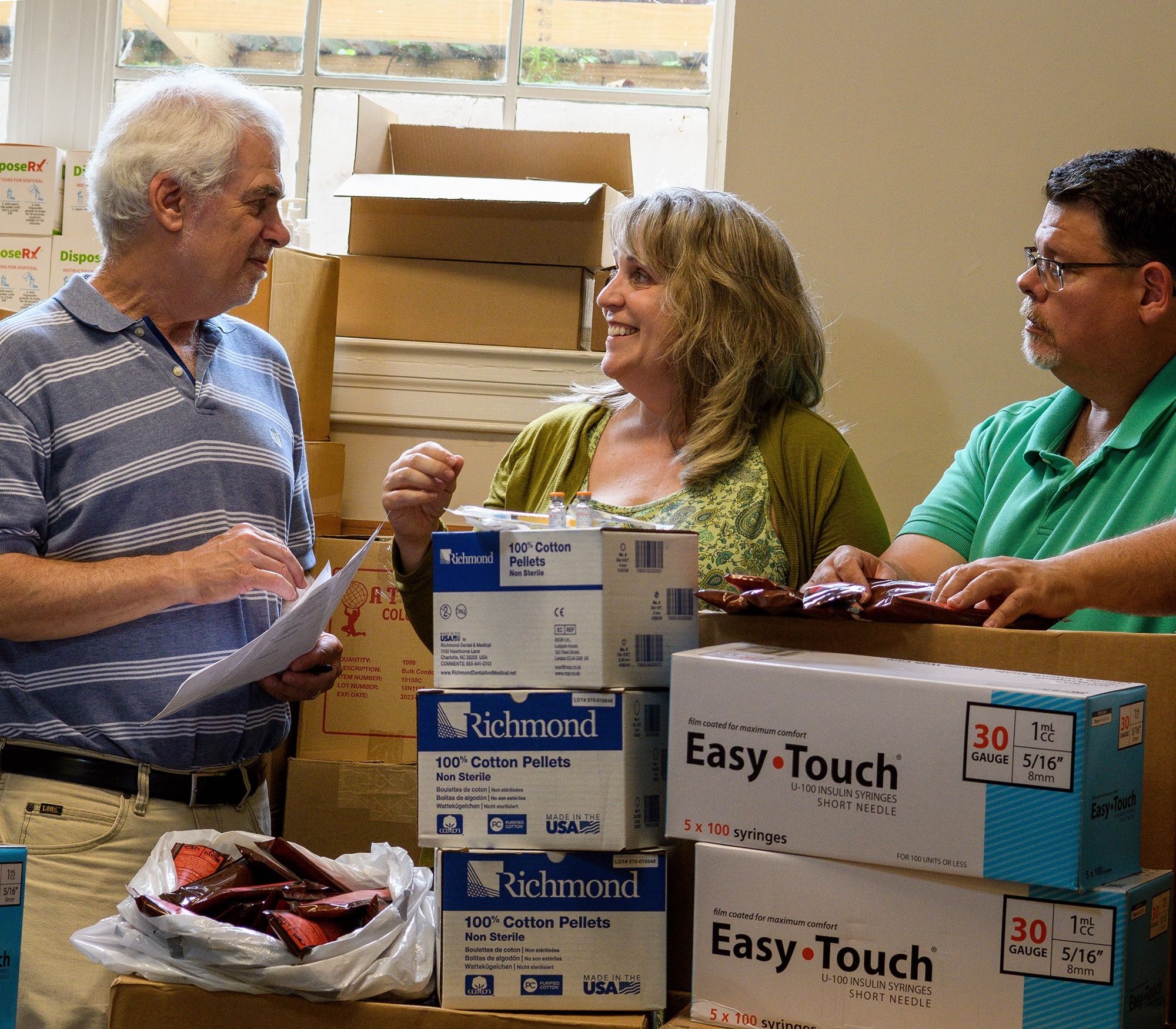

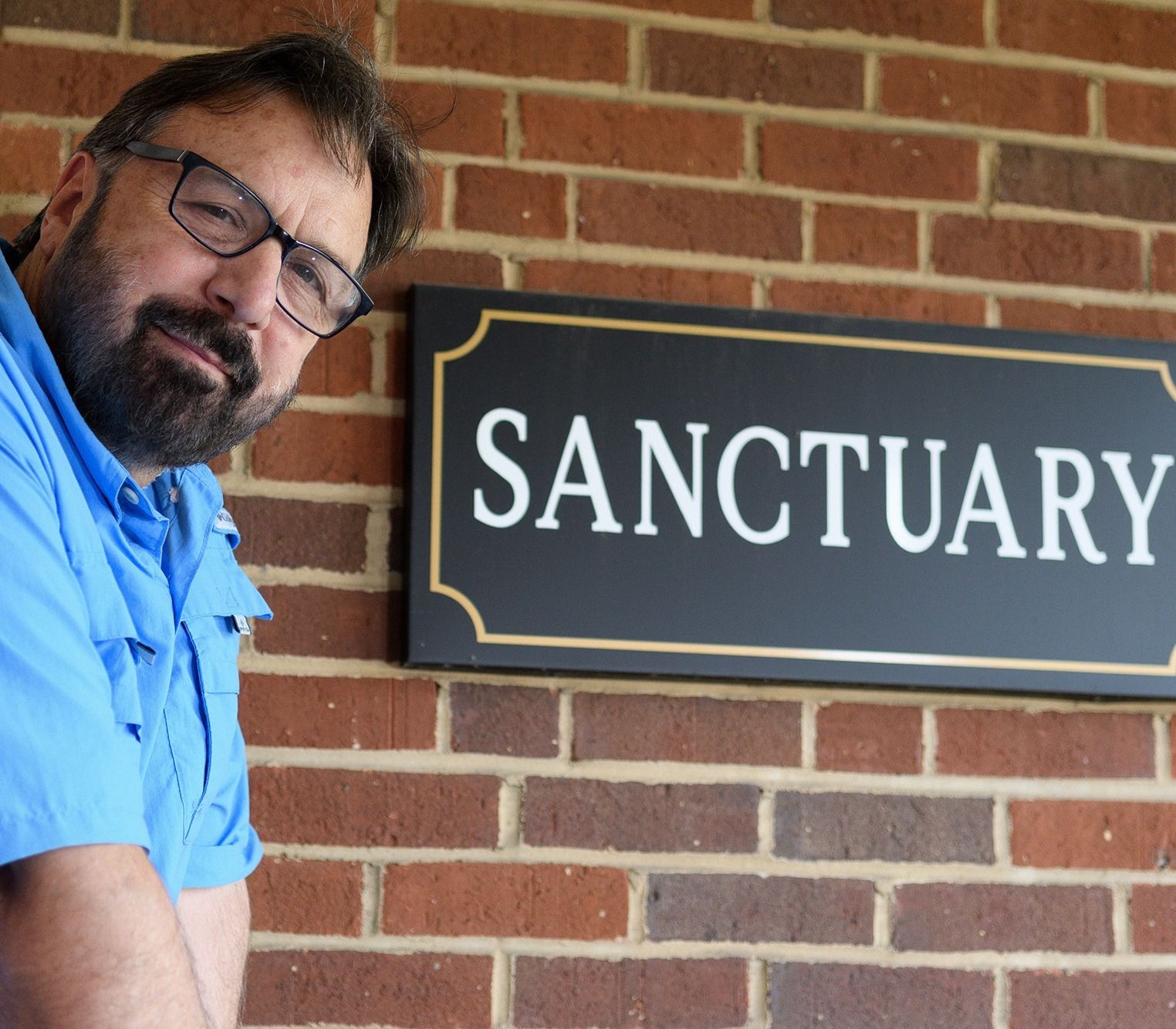
Research psychologist Dr. Kenneth Gruber, Floyd-Pickard, and Poole (left to right) regularly meet at the GCSTOP clinic hosted by College Park Baptist Church (Pastor Michael Usey, far right). There, Charlotte Evans (center), a nurse with over 30 years of behavioral health experience, provides screening and assessments to participants. Assisting her are social work students from the UNCG and NC A&T Congregational Social Work Education Initiative. The initiative partners with Cone Health’s Congregational Nurse Program to provide services to underserved and vulnerable individuals in accessible, community-based settings. See more photos on UNCG Research Flickr.
FORCE MULTIPLIER
One of the most powerful resources that UNCG provides to the effort, Albright says, is students.
Students in UNCG’s undergraduate and graduate social work programs are required to do internships to gain practical experience before they graduate. These internships allow GCSTOP to help more people.
Mike Thull, assistant professor of social work and GCSTOP’s clinical director, oversees selection and training of students who work with GCSTOP. The program has six to eight interns – half undergraduate, half master’s – at any given time.
“As they come in, they go through a pretty intensive training,” Thull says. New interns also spend time – after initial training – shadowing outgoing interns and are equipped with a “decision tree” to clarify when they need to call in someone more senior.
They are taught, Thull says, to be particularly sensitive to those who might be a risk to themselves or others.
“They always go out in teams with someone who has some more senior experience,” he says. “And then we set very specific parameters for them.”
Thull, who directs the entire field program for social work undergraduates, notes that GCSTOP is “definitely more selective” than many other opportunities. It also requires a considerable time commitment. Undergraduates and first-year master’s students work 16 hours a week, while second-year master’s students put in 24 hours per week.
“To me, it feels like it’s been a force multiplier,” Albright says. “We’re paying for some positions, and we’re able to leverage those against students. The students – the ability they have to contribute to the program is unbelievable.”
COLLECTING EVIDENCE
When Albright helped launch GCSTOP, he wanted to be sure that it was truly effective. That requires data collection and rigorous evaluations.
“He wanted to make sure we had a solid evaluation plan,” says Dr. Kenneth Gruber, a research psychologist and expert on evaluation in UNCG’s Center for Youth, Family, and Community Partnerships.
Evaluation is important, Gruber and Albright say, to attract funding to keep GCSTOP going and to continue improving the program. Rigorous evaluation and publication of those findings in peer-reviewed journals could also provide the building blocks for turning GCSTOP into a model that could be used across the state and nationally.
Data collection has been challenging. Health care information is federally protected and must be safeguarded. Furthermore, participants are not all willing or able to provide extensive information.
But Gruber has been developing systems to gather information and evaluate the program’s impact. Early results are encouraging.
“The people who are helped by Guilford County EMS and then the GCSTOP program, many of them are not repeating overdoses and are getting naloxone. They are avoiding the death sentence, if you will, of overdose.”
There are many other questions that Gruber would like to dig into: Is the program successful in getting people who use opioids to adopt safer use patterns, such as using clean needles and testing their drugs for the highly potent fentanyl before injecting it? Are they adopting safer sex practices that could prevent HIV transmission? And is the community benefiting from lower health care costs because of fewer EMS calls and emergency room visits?
Albright says that while the total number of overdoses in Guilford County continues to increase, the percentage of overdoses resulting in death has declined since GCSTOP started its work.
Measures that restrict how many pills doctors can prescribe and close legal loopholes related to lab-brewed fentanyl analogues, Albright says, haven’t – at least as of early summer 2019 – started to tamp down overdose numbers. But in Guilford County, he says, the percentage of suspected overdoses ending in death dropped from 18 percent in 2016 to 11 percent in 2018 – with this year’s percentages on track to be even lower.
GCSTOP helps Albright fulfill a commitment he made in 2015 to neighbors whose son died of a heroin overdose.
“I made a promise to their parents, literally at the funeral, that we would do more in this community to try to address this.”
2044 GCSTOP naloxone packs distributed
515 GCSTOP naloxone rescues
A 1/3rd drop in the percentage of overdoses ending in death in Guilford from 2016-2018
MAKE A CHANGE
Holleman, too, has big hopes for GCSTOP.
“My dream is to meet someone after they’ve overdosed,” Holleman says. “See them find some sort of recovery – go back to school, learn how to be a helper – and work for GCSTOP.”
That hasn’t happened yet, but it could.
After Holleman finally got the High Point man, Dave, naloxone, the two started talking more often.
“Eventually he’s like, ‘I’m ready to do something different,’” Holleman says.
He got the man into a methadone clinic to start weaning himself off opioids. And then Dave told Holleman he wanted to help others struggling with addiction.
He asked for clean needles and safe injection supplies and offered to distribute them at certain motels where he knew people sometimes used drugs. And then Dave went further.
“He said, ‘I want to go back to school and be a drug counselor,’” Holleman says. “And then he started back at school.”